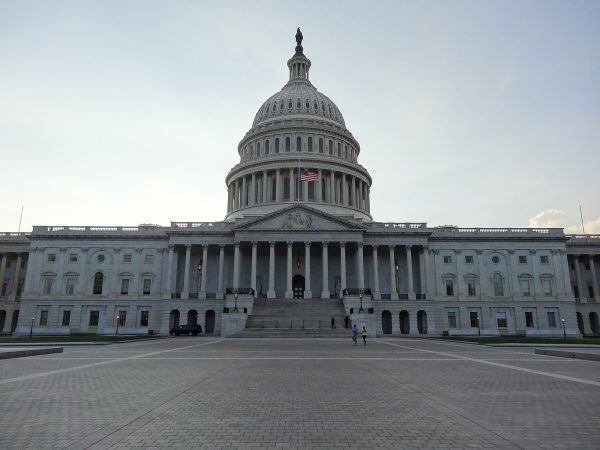Lecture Claims Societies Use Past to Guide Revolution
Professor of Greek Literature Miriam Leonard of University College London came to Dickinson College to give a two part lecture in which she claimed that societies typically use the past as a guiding force for revolutions
Titled Classics and the Birth Of Modernity and Time and Revolution, the talks comprised the 20th annual Christopher Roberts lecture hosted by the Classical Studies department. Provost and Dean of the College Neil Weissman described the lecture series as “engaging, challenging: a good opportunity to sit back, and enjoy the thinking.”
Described by Professor of Classical Studies Marc Mastrangelo as “on the forefront” in her field, Leonard began her talk by asking how the question of Jewish citizenship in post-revolutionary France is related to classical history. She explained that granting full citizenship rights to the Jewish community, and the wider French revolution, is hailed as a paradigm shift to the “modern” period, despite depictions of the revolution being bathed in classical imagery.
Leonard explained that many “modern” philosophers, such as Immanuel Kant, G.W.F. Hegel and Johann Wolfgang von Goethe, all make reference to classical figures in the writings, and painters such as Jacques Louis David paint classical figures such as Socrates and the Horatii in similar manners to both revolutionary and religious figures.
She specifically noted the similarities between David’s depiction of Socrates in La Mort de Socrate and depictions of Jesus, specifically the pose of Socrates and 12 men whom surround him. “Socrates carries with him an echo of Christ,” she said.
Seth Levin ’19 said “The talk was very enlightening. I learned about the French Revolution in High School in my AP European History class, but I never knew about the importance antiquity had on the revolutionaries of the period.”
Leonard furthered that “Rome is the prototype of an enlightenment society” due to their tolerance of other religious faiths in the Republican era, and citizens’ self-sacrifice for the state. Leonard cited David’s The Lictors Bring to Brutus the Bodies of His Sons, which depicts the Roman consul Lucius Junius Brutus after he ordered the execution of his sons Titus and Tiberius for attempting to help reestablish the Roman monarchy. “It is striking that the Jewish question … needed the example of ancient Rome to reach a solution,” said Leonard.
Leonard continued that, despite revolutionary regimes claiming modernity, they often look back to the classical world for inspiration, which stem from their radical and often violent break with the preceding regime. It is “not emancipation from the past, but emancipation through the past,” said Leonard, “Marx himself was depicted by the Prussian press as a modern-day Prometheus.” She explained that people often turn to the past for guidance as to the future, “The French revolution saw itself as Rome reincarnate.” Leonard described this notion of many systems considering themselves to be modern drawing heavily from classical notions as “the paradox of modernity.”
However, Leonard claimed that only limited similarities may be plausibly drawn between a classical and a modern revolution. This stems from the fundamental differences between the two time periods, namely in their economic systems. “Antiquity remains an inadequate paradigm” for developing a modern revolution theory, she said, “Rome is both the promise of an ideal and a self-deception.”
Because of these differences, Leonard described looking to the classical world for modern guidance as “partly a self-delusion” as, “it’s not Rome, its French revolutionary Rome.” However, she did note that Rome has been pointed to as a warning for European empires to not overreach, lest they risk collapse.
Mastrangelo described the “paradox of modernity” as an attempt “to liberate themselves from the past … but they use the past to do it. That’s a paradox.”
Ian White ’19 added “The lecture gave me more of an interest in exploring the history of the discipline of classics. I didn’t know that thinkers were referencing classical texts in such important debates during the French Revolution.”
Stephanie Klein, ’21 responded “I thought it was really interesting. The way she drew the differences between the revolutions really proved that she was well informed. I was really captivated.”
Overall, reactions to the talk were positive. Mastrangelo said, “I loved it. It was fantastic. It was something that our students don’t usually experience because it’s about the history of ideas. Its challenging to our students, … but it’s very important to our history and to our own notion of what modernity is.”
Leonard’s two-part event took place on both Friday, Feb. 16 and Saturday, Feb. 17.




